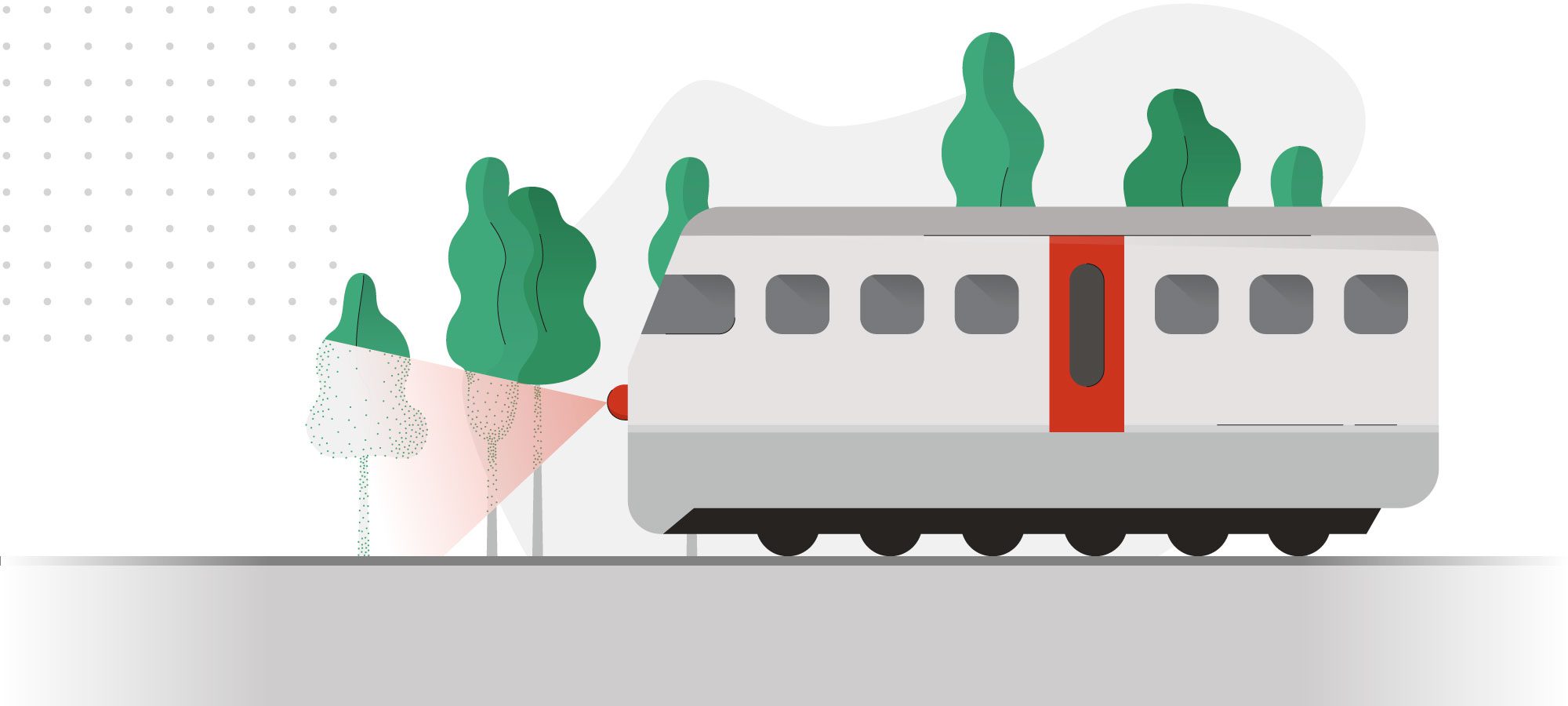Scalable cloud architecture gears MYND up for the commercial market
Kapernikov offers a unique combination of expertise: they know AI and data science, and they can hel ...
Machine vision
Kapernikov has recently developed a method to detect vegetation overgrowth alongside Belgium’s railway tracks. No luxury for railway operator Infrabel, because efficient vegetation management is critical for the safe operation of the railways.

Railway infrastructure companies are responsible for managing trackside vegetation efficiently and for maintaining the railway lines properly. Problematic vegetation overgrowth areas and pruning zones usually need to be identified ‘manually’ by maintenance teams. This can be a time-consuming and expensive task.
Kapernikov developed an automatic solution for vegetation detection based on Lidar data. A Lidar system was mounted on one of Infrabel’s data collection trains in order to scan the surroundings of the lines while the vehicle moves. The laser data were then combined with location data and converted into 3D point clouds.
Based on these point clouds, Kapernikov developed an algorithm allowing Infrabel to make a meaningful distinction between vegetation and non-vegetation without the need for a human observer. The regions that require pruning are then identified automatically.
The algorithm provides the location, density and height of the trackside vegetation. This information, combined with the definition of demarcation surfaces that signify the allowed level of vegetation overgrowth enabled Kapernikov to generate alerts in case of excessive vegetation overgrowth, i.e. when the vegetation overgrowth can pose a threat to the operation of the railway.
Infrabel can use the collected 3D data in combination with Kapernikov’s algorithm to manage vegetation more efficiently. The company can now set proactive maintenance plans and reduce the number of expensive and time-consuming manual checks.